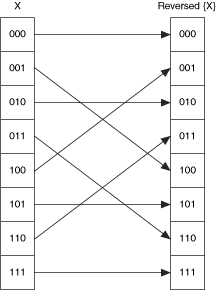Digital Reversed Order VI
Owning Palette: Signal Operation VIs
Requires: Full Development System
Modifies the input array according to the digital-reversed order of the index.
Wire data to the X input to determine the polymorphic instance to use or manually select the instance.
Use the pull-down menu to select an instance of this VI.
 Add to the block diagram Add to the block diagram |
 Find on the palette Find on the palette |












